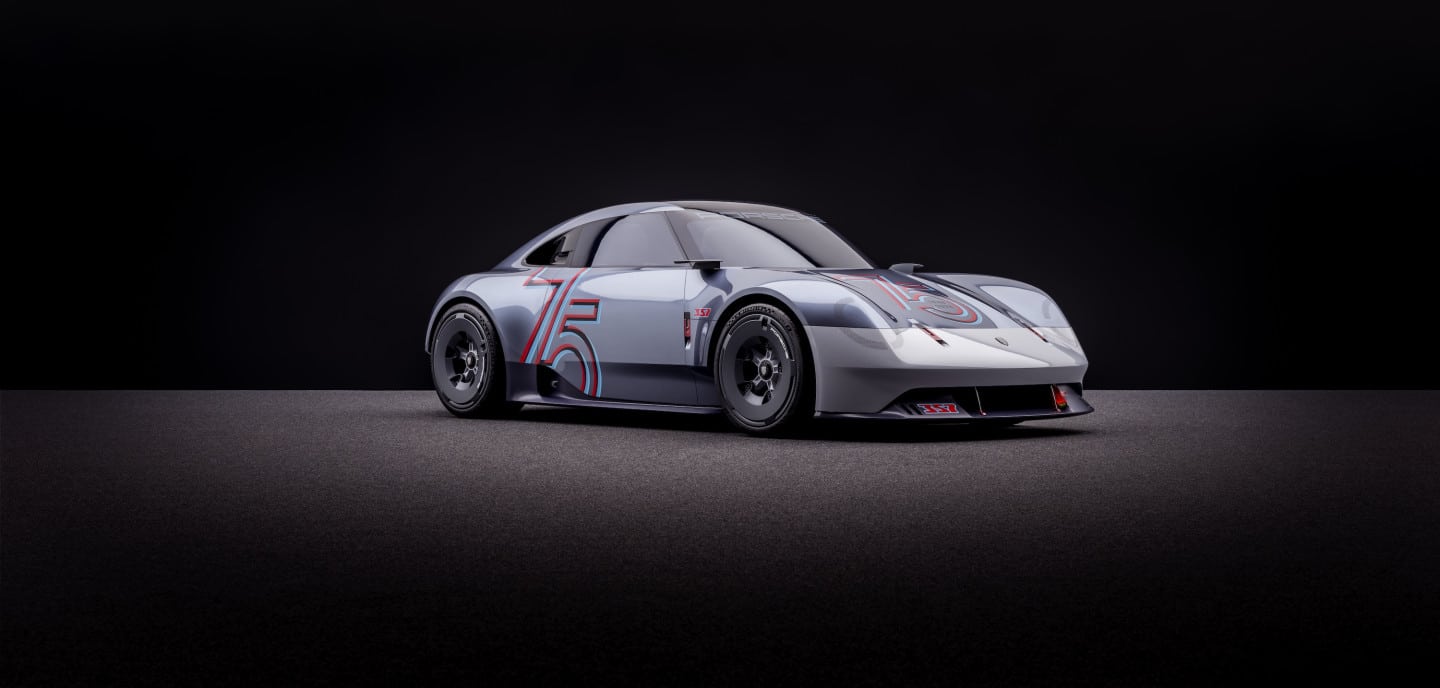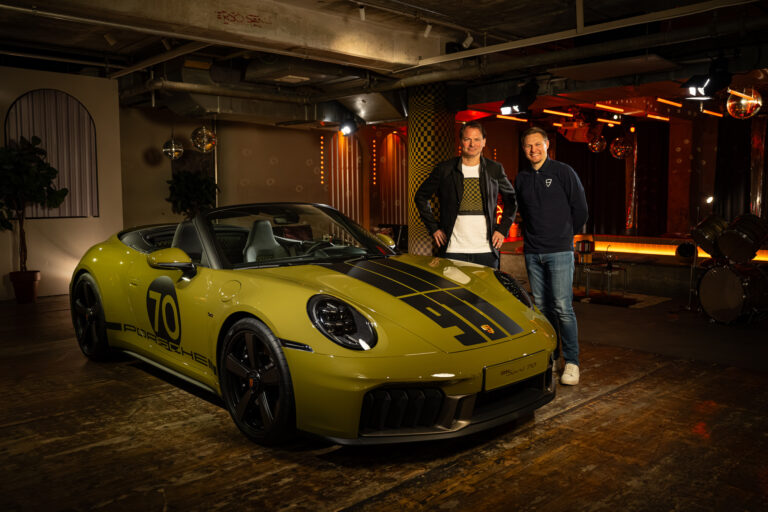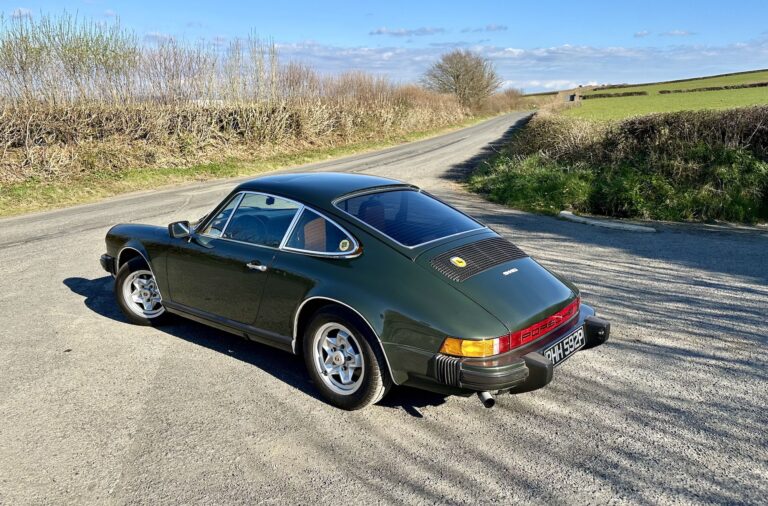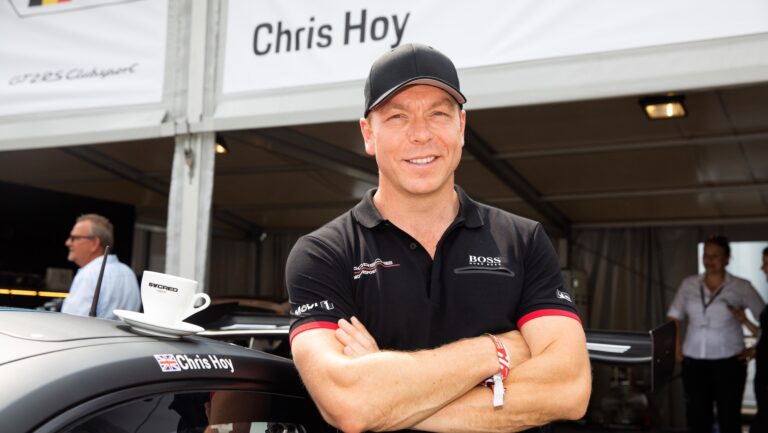 By Lee Sibley
2 years ago
By Lee Sibley
2 years ago
7 stunning details behind Porsche’s new Vision 357 concept
Porsche unveils Vision 357: a modern-day take on the iconic 356 – here's your first look
Porsche has unveiled a special 75th birthday present to itself in the form of the striking Vision 357 concept car.
Based on the 500hp Cayman GT4 RS platform, the concept is a modern-day homage to the 356, which history tells us was company founder Ferry Porsche’s own dream of what a sports car should be.
The concept by Porsche’s design department, Style Porsche, was unveiled on 25th January in Berlin and will embark on a global tour with appearances at events throughout the year to mark 75 years of the Porsche brand. In the meantime though, here’s seven stunning details behind this quite remarkable Vision 357…
1) Air intakes through the windows
The mid-engined Vision 357 has, much like its production Cayman brother, needed clever engineering to ensure enough air is fed to its flat six for induction. That’s why this new concept utilises the same air intakes in the rear quarter windows as the GT4 RS, with air then being fed down into its 4.0-litre atmospheric engine.
Categories
2) Cutting-edge wheels
The 20-inch wheels alone are a work of art from Porsche’s styling department. Made of super lightweight magnesium, with a centre-locking nut and aerodynamically optimised carbon fibre hubcaps, their basic spec screams modern-day motorsport. But take a closer look at the design and you’ll notice more than a passing nod to the earliest Porsche 356s, namely the large 205mm bolt circle as seen on models with those early drum-braked wheels.
3) A touch of glass
Porsche is quick to point out in its press release how the 356 pushed the boundaries of glass production, with post-1952 models featuring a bend in the middle of the screen. Inspired by such adventurous engineering, the team at Style Porsche have presented the 357’s A-pillars in black, giving the look of a swooping, singles piece of glass wrapping sharply around an extremely narrow cockpit. the appearance is said to resemble the visor of a helmet, though we think this looks uncannily like that of the 936 and even 919 race car’s window surfaces.
4) Longitudinal engine grille
Porsche sports cars have long featured decklid grilles to aid engine cooling, however since the 911’s arrival in 1963 these have sat transversely just above the car’s rump. The 357 pays homage to the early 356s however, which had narrow, longitudinally-positioned grilles. On the 357, its third brake light is integrated into this elongated design… and need we even tell you how many slats Porsche has decided to utilise?
5) Dynamic lighting… with no lights
Vehicle lighting is an increasingly significant brand marker for Porsche, which has used a typically dynamic, dramatic setup for its 357. Like all current Porsche models, the Vision 357 features a four-point light signet in front, though these are devoid of traditional lenses and are instead integrated seamlessly into the car’s body, thanks to an army of concentrated piercings. The same design principle is deployed on the rear of the 357.
6) Sleek bodywork
The Porsche 357’s bodywork is silky-smooth from all angles. A highlight of this is the front lid, which is a one-piece item and wraps around the 357’s entire front. It is fastened onto the contrasting front bumper by quick-release mechanisms. The concept’s super slippery appearance is compounded by slim cameras used instead of the traditional side mirrors seen on all production Porsches to date.
Porsche has utilised many different elements to make the 357’s body too: the side sills are hemp-based natural fibre-reinforced plastic, as used on the Mission R Study. The tailpipes are made of ceramic, while the trim around them consists of titanium.
7) 356 for the 21st century
The form of the 357 is most striking: it is easily recognisable as being related to the 356 thanks to its flyline, which doesn’t slope as dramatically as the 911 which went on to replace it. Its hips though are more muscular in appearance, housing large wheels and adopting a low, wide stance, and the trailing edge of both front and rear arches have been cut away for better high-speed airflow. The passenger cell is narrow, much in keeping with the original 356’s profile from the late 1940s.























